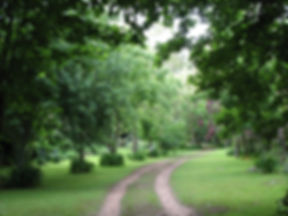top of page

The 'not quite a miracle' wilderness garden

Our garden is about two hectares.
We grow about 270 different sorts of fruit - I think it’s Australia’s largest fruit collection.
There is never a time when there aren’t about 20 sorts of fruit plus veg and flowers to pick. There are avocadoes, custard apples, sapotes, cherries, macadamias, peaches, 125 varieties of apple, olives, pomegranates, Desert limes, cholacayote melons rambling up the Bunya nut tree... yet we live in a valley where the temperature regularly goes down to minus 7 in winter, can climb to 52C in summer.
We’ve had three months at times of gale force bushfire winds, during an eleven month period with only 47 mm of rain... and yet our garden had no watering. And it survived. (Well, most of it, anyhow. I’m not sure I coped quite as well as my trees...)Our garden feeds us, the birds, four wombats, nine wallabies, two echidnas, a mob of visiting kangaroos, seven possums, and about 40,000 other species, most of which are microscopic. (No, I haven’t counted them all, I’m just estimating.) Weeks will go by without us doing any work in the garden at all, except to harvest. By most standards it is a mess; but it is a beautiful and productive mess.
So how do we do it?
By designing a gardening system that suits Australian conditions.
We have inherited our gardening designs from cooler, wetter and much cloudier places. In Europe you need to maximise sunlight with big gaps between trees and nice straight rows. If you do that here your garden dries out and/or fills with weeds.
So many of our ideas about growing fruit and veg come from farming, too. Farmers NEED nice big spaces to drive their tractors between the trees. And they want all their fruit to mature at once, too, to make picking and selling easier.
Backyard growers rarely have tractors and the last thing they want is six cases of apricots ripening on Tuesday. We need to change the way we think about our gardens- and throw out a heck of a lot of preconceptions.
I am an organic gardener: I don’t use artificial fertilisers, herbicides or pesticides except to experiment. But I believe conventional organic ideas are not enough: they still allow backbreaking loads of mulch and harsh manures that may do as much damage as artificial fertilisers; rigorous digging and weeding; and organic pesticides that still kill the predators which might control the pests, or which eliminate the pest predators’ food supply so their numbers never build up.
We need to develop new styles of growing things that suit our country. Australia has different soil structures and pest and predator relationships. Our plants respond to heat and light and pests and drought in ways that have scarcely been studied. Here, lack of water or harsh heat governs what we can grow, whereas in northern countries the limitations are set by the available sunlight.
We need to model our growing methods on the bush around us, not on outdated stereotypes from Europe and the United States of America. We need to move beyond growing methods that originated when labour was cheap.
Nowadays, chemicals have replaced much of that labour, but the growing systems are still much the same. We need to look for radically different techniques.
bottom of page



